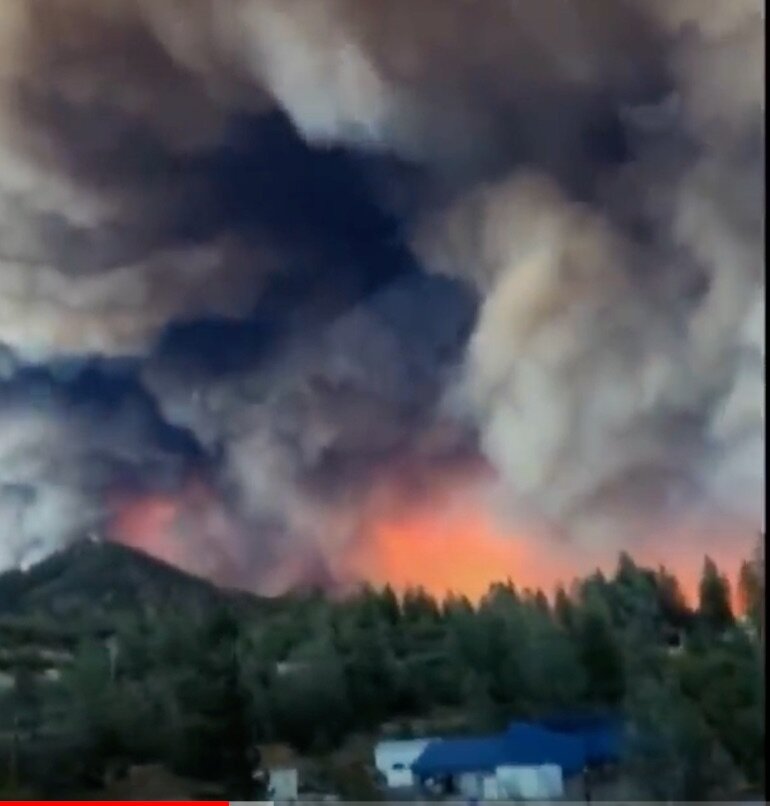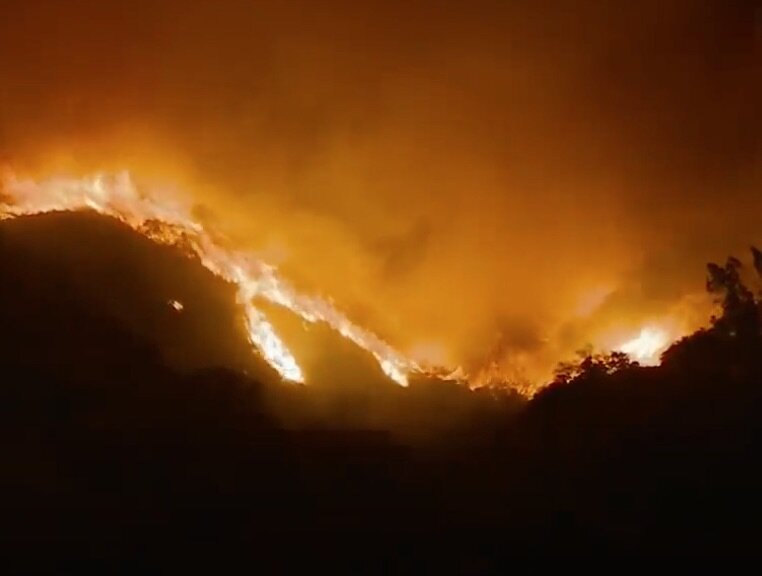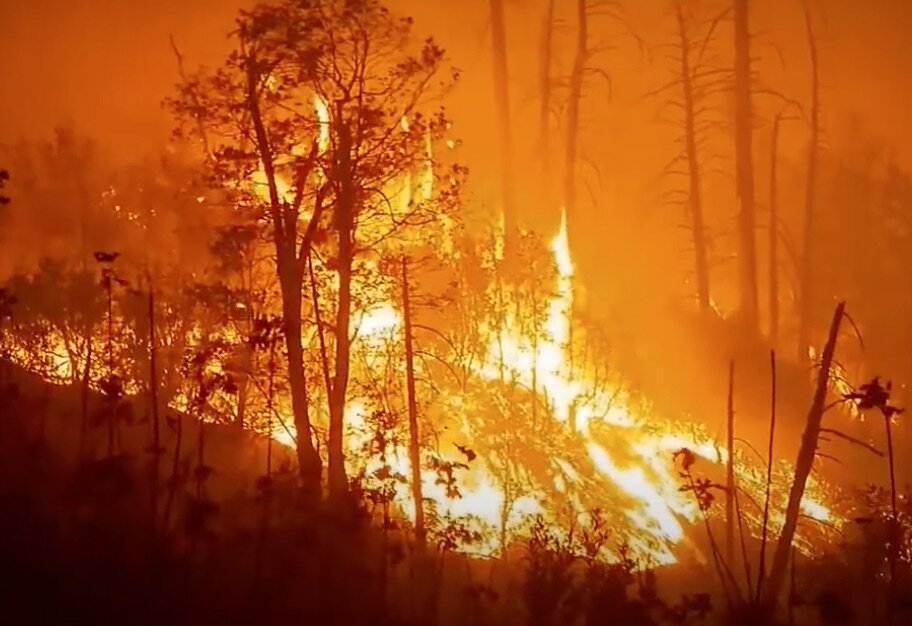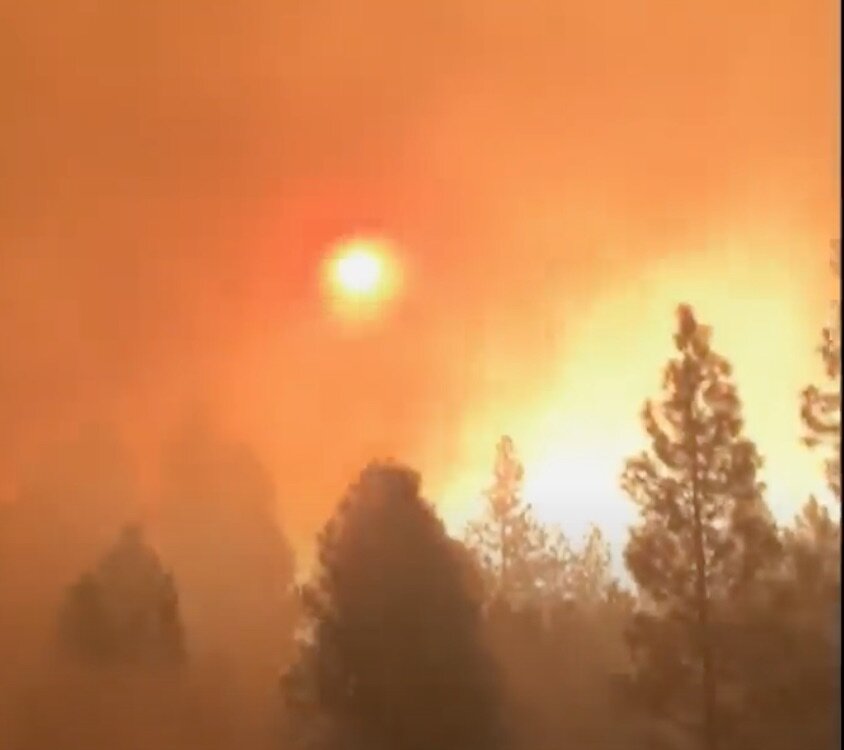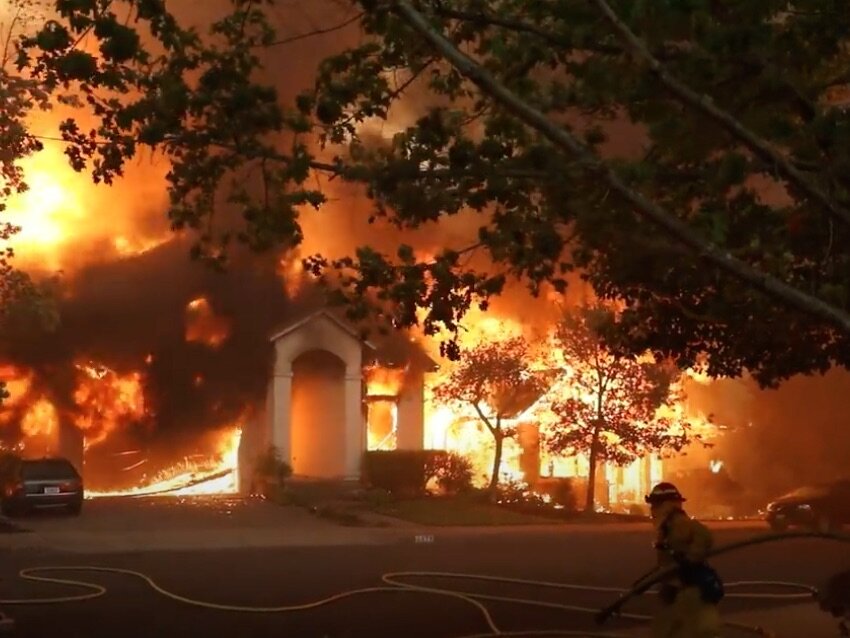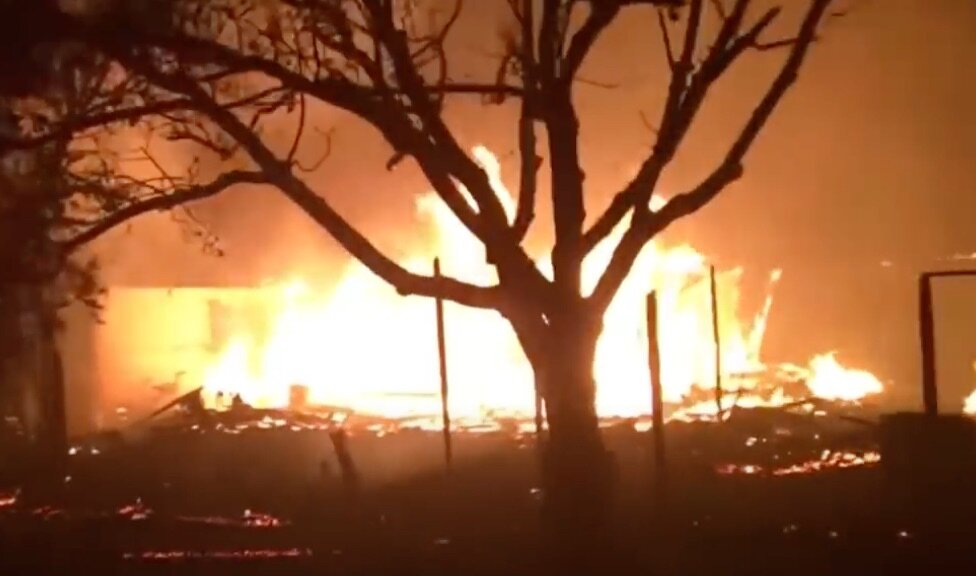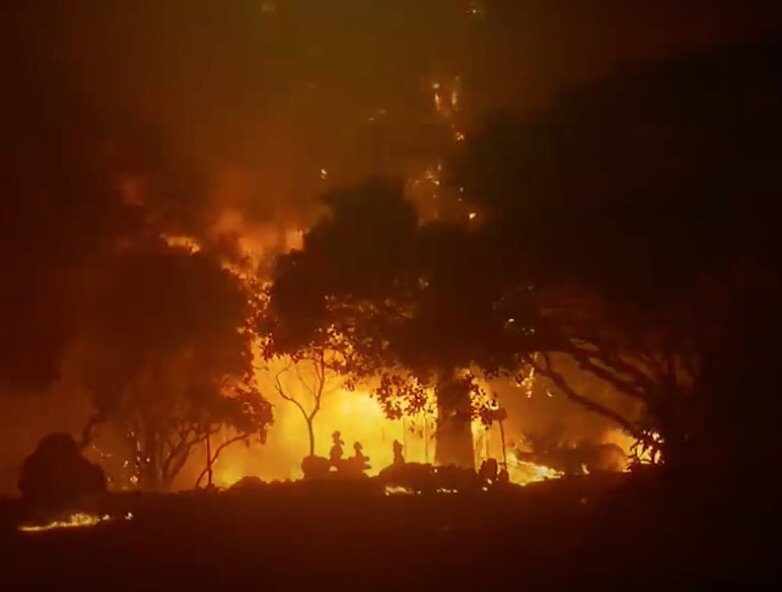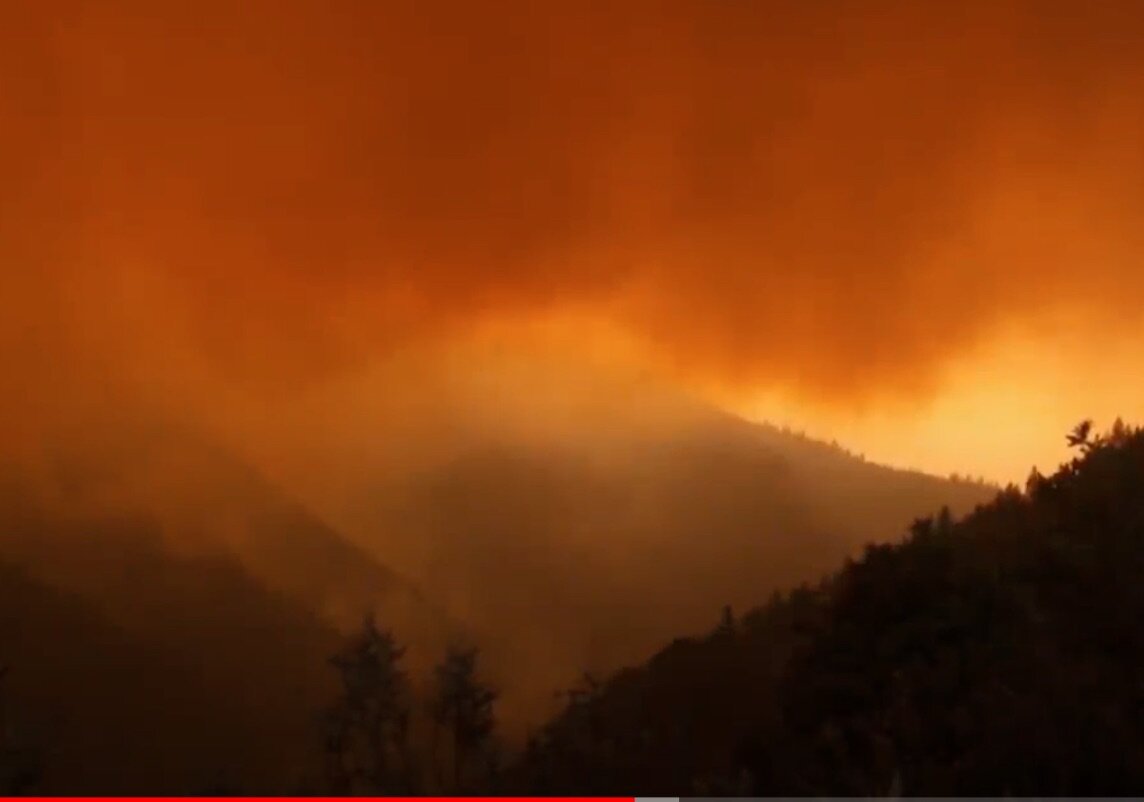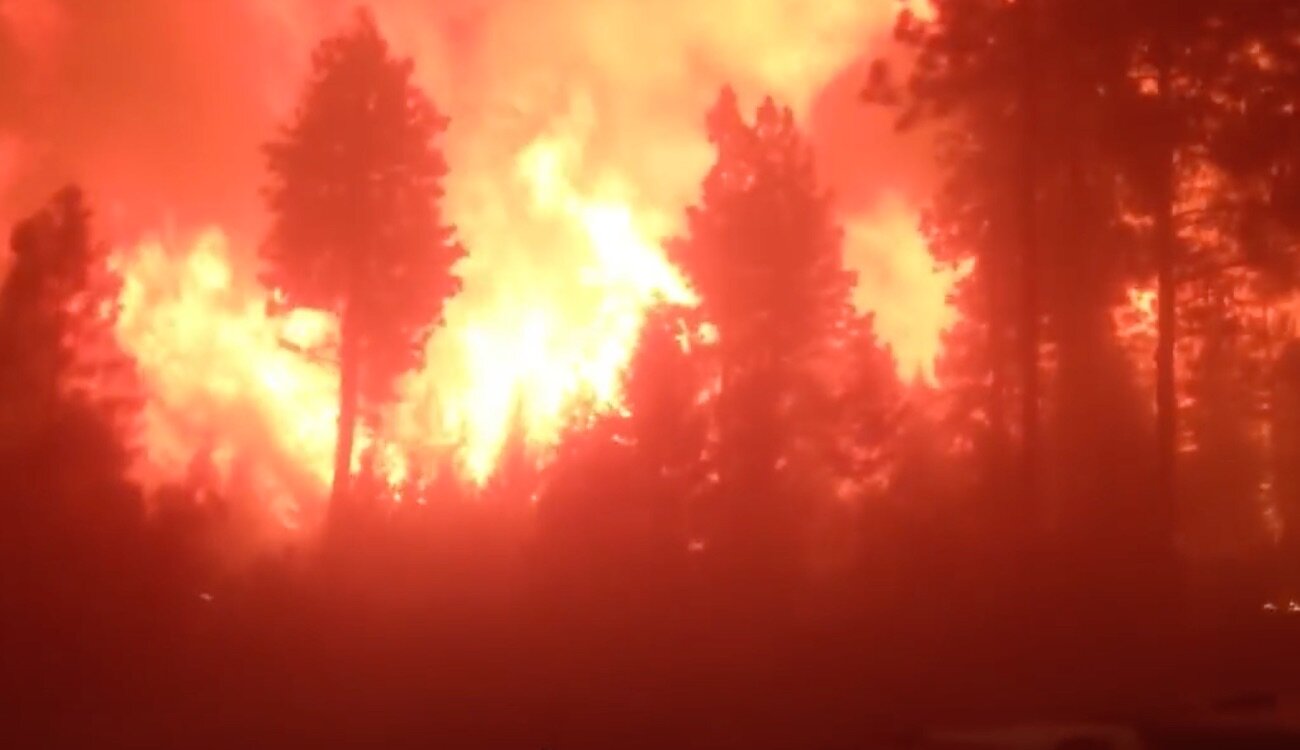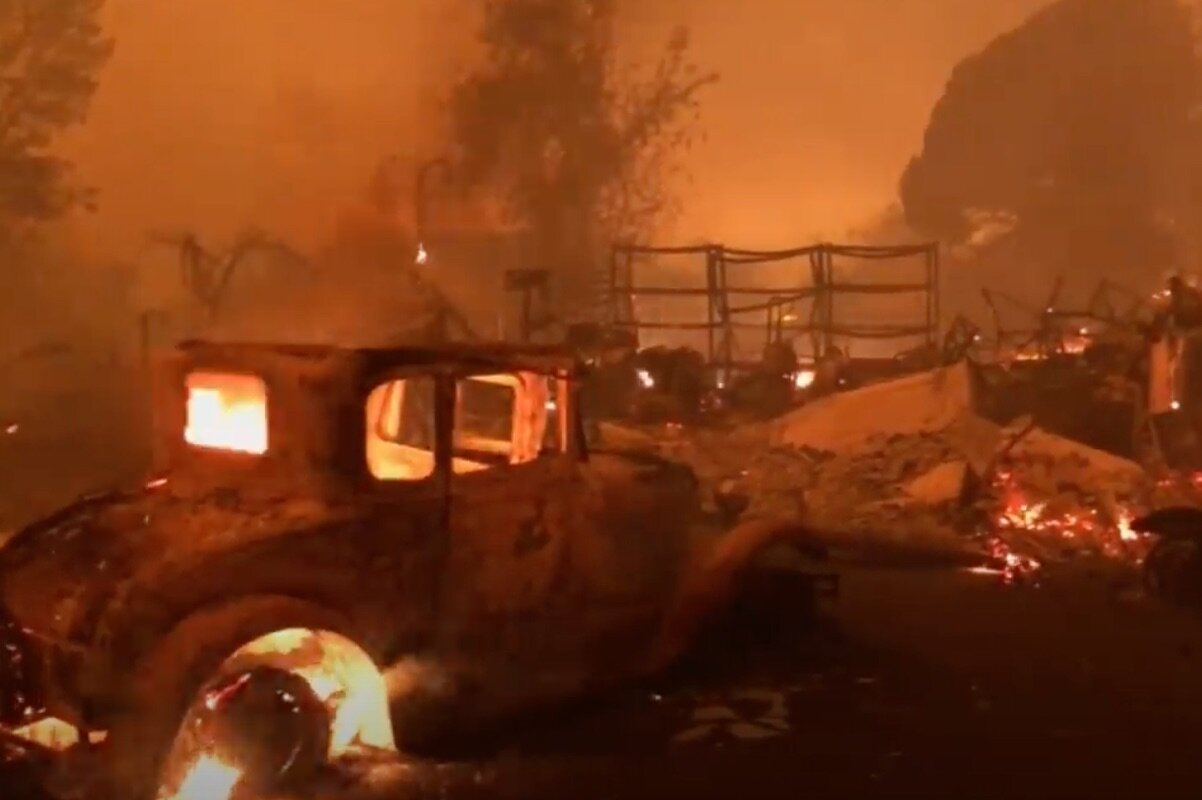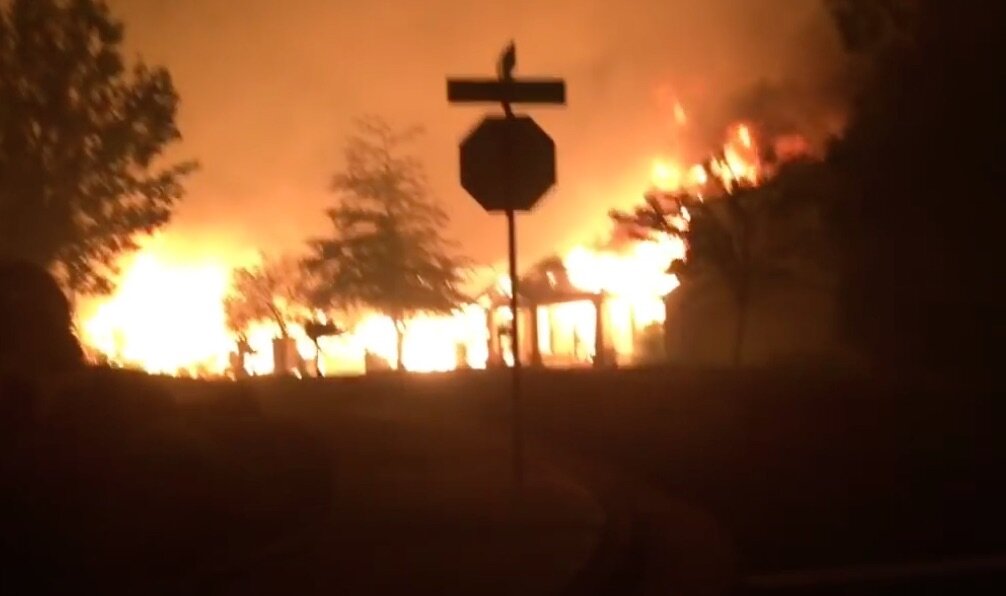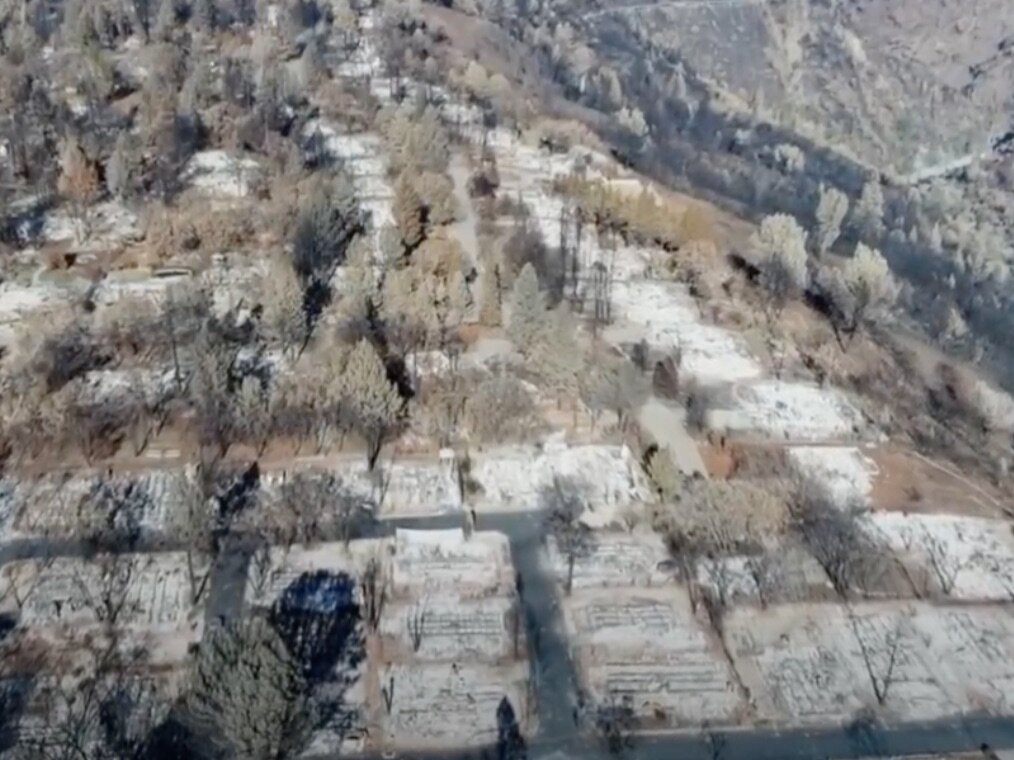Watch PVNU’s Zoom Presentation to learn about our initiatives!
Wildfire
What makes wildfire so dangerous?
Its ferocious and unpredictable intensity? The speed with which it expands beyond its original source? Its propensity to change direction unexpectedly? Or the contagion of fear and confusion that its relentless advance, engulfing smoke or shower of burning embers spawns? Without warning, wildfire can quickly jump an interstate highway, multiple ravines or a river valley with no hesitation.
Each and all of these aspects combined make wildfire different from any other fire.
Sweeping across miles of intermixed forest, farmlands and residential neighborhoods in a few short hours, northern California’s recent wildfires demonstrate the urgent need for an informed, accurate understanding of the factors that cause and accelerate their rapid, intense spread. Even more urgently, we must draw on the experience and knowledge gained from those enormously destructive fires to develop and implement a sound, comprehensive town-wide program to prevent, suppress and safely escape wildland fires in and around Portola Valley.
Much like a pandemic, wildfire entails a struggle between the forces and conditions propelling the contagious spread and expansion of fire across a landscape, and the resources available to contain and suppress that expansion and spread. If a fire’s expansion and spread overwhelm the resources available to contain and suppress the fire, as they did in Coffey Park in 2017 and in Paradise in 2018, the only alternative becomes evacuation and escape.
Watch Fire in Paradise, Frontline’s 2019 documentary on the catastrophic Camp fire and its destruction of one California city that thought it was well-prepared to prevent and protect itself against wildfires.
Understanding the forces and conditions that propel the expansion and spread of wildfire is essential to assembling and preparing the resources needed to prevent wildfire from occurring, or containing and suppressing it when it does.
In general, the factors affecting the behavior and severity of wildland fires fall into three important, inter-related causes:
Climate and weather,
Topography and physical setting, and
The nature, density and extent of combustible vegetation, structures and other materials on the landscape.


